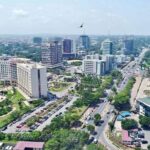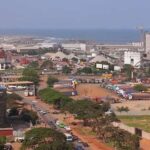Elmina

Elmina is a historic town on the south coast of Ghana in West Africa. It is renowned for its significant role in the trans-Atlantic slave trade during the colonial period. The town is home to Elmina Castle, also known as St. George’s Castle, which was built by the Portuguese in 1482. Elmina Castle is one of the oldest European-built structures in sub-Saharan Africa and served as a key hub for the trans-Atlantic slave trade.
The castle changed hands between the Portuguese, Dutch, and British over the centuries. It was originally used for trade in gold and ivory but later became a central point for the transportation of enslaved Africans to the Americas. The dungeons of Elmina Castle were notorious for their harsh conditions, and the site is a powerful and somber reminder of the brutal history of the slave trade.
Today, Elmina is not only a historical site but also a vibrant town with a mix of cultures and economic activities. The castle and its surroundings attract tourists and scholars interested in understanding the impact of the trans-Atlantic slave trade on the African continent and its lasting consequences.
Map view
More from Wikipedia
| ID |
|---|
| 52173 |
| Name |
| Elmina |
| State ID |
| 52 |
| State Code |
| CP |
| State Name |
| Central |
| Country ID |
| 83 |
| Country Code |
| GH |
| Country Name |
| Ghana |
| Latitude |
| 5.08470000 |
| Longitude |
| -1.35093000 |
| WikiData ID |
| Q968662 |







